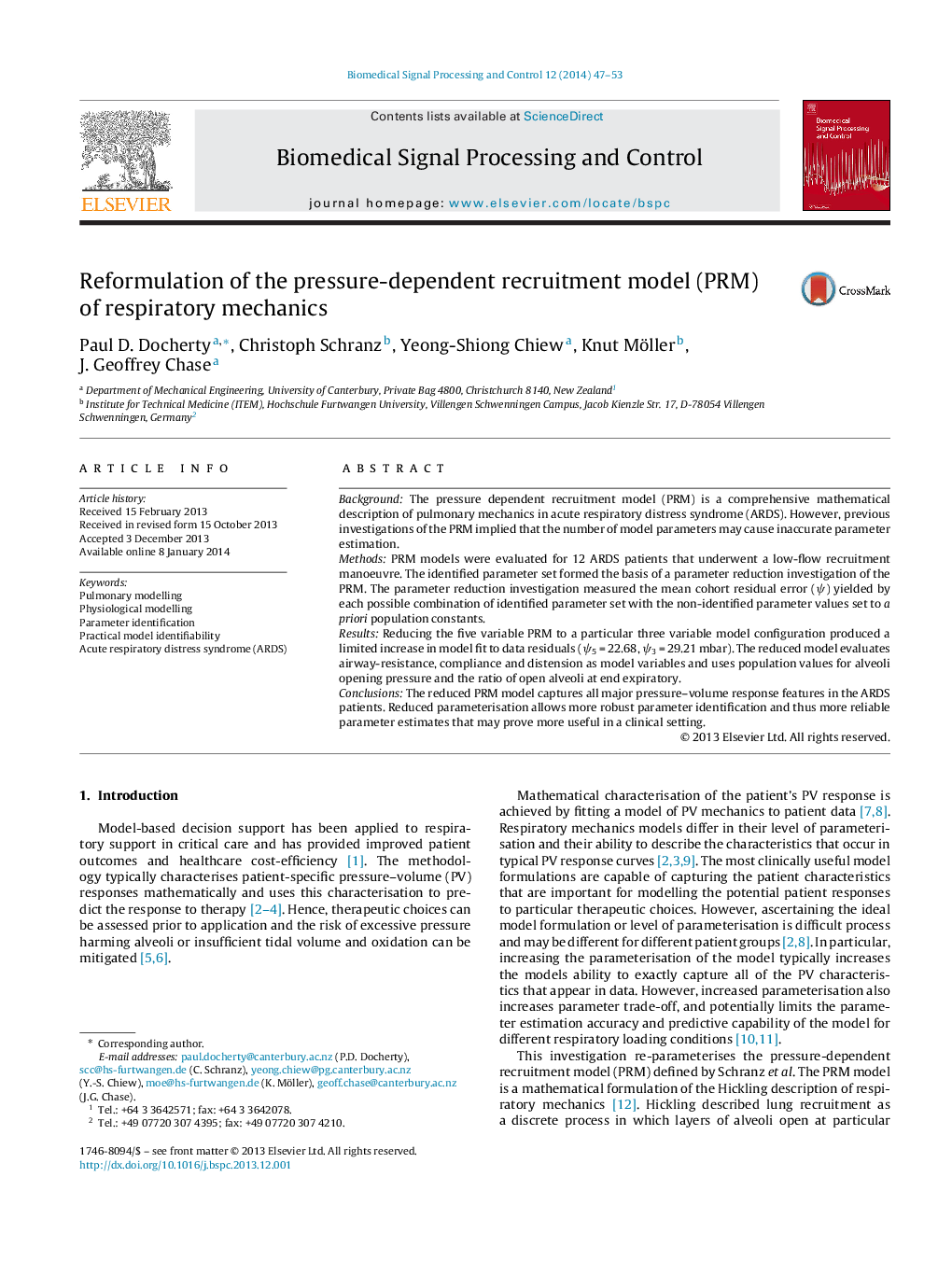| Article ID | Journal | Published Year | Pages | File Type |
|---|---|---|---|---|
| 558765 | Biomedical Signal Processing and Control | 2014 | 7 Pages |
•The pressure recruitment model (PRM) accurately captures P–V responses of ARDS patients.•The efficacy of the PRM model was assessed with reduced model variable sets.•The reduced PRM was still able to capture ARDS patients P–V responses to LF manoeuvres.•Hence, the original PRM was over parameterised for this cohort and experimental protocol.
BackgroundThe pressure dependent recruitment model (PRM) is a comprehensive mathematical description of pulmonary mechanics in acute respiratory distress syndrome (ARDS). However, previous investigations of the PRM implied that the number of model parameters may cause inaccurate parameter estimation.MethodsPRM models were evaluated for 12 ARDS patients that underwent a low-flow recruitment manoeuvre. The identified parameter set formed the basis of a parameter reduction investigation of the PRM. The parameter reduction investigation measured the mean cohort residual error (ψ) yielded by each possible combination of identified parameter set with the non-identified parameter values set to a priori population constants.ResultsReducing the five variable PRM to a particular three variable model configuration produced a limited increase in model fit to data residuals (ψ5 = 22.68, ψ3 = 29.21 mbar). The reduced model evaluates airway-resistance, compliance and distension as model variables and uses population values for alveoli opening pressure and the ratio of open alveoli at end expiratory.ConclusionsThe reduced PRM model captures all major pressure–volume response features in the ARDS patients. Reduced parameterisation allows more robust parameter identification and thus more reliable parameter estimates that may prove more useful in a clinical setting.
